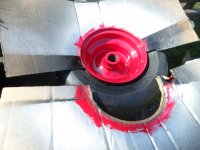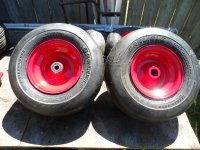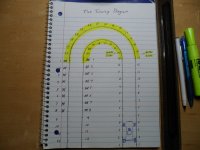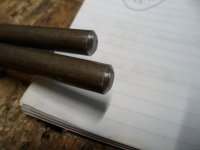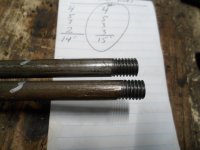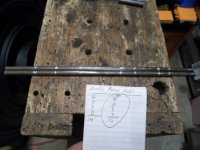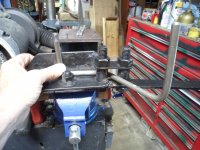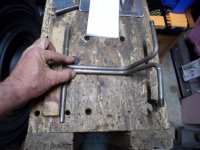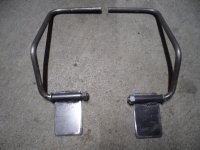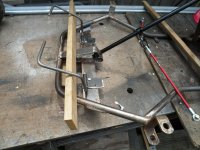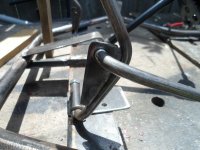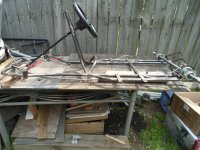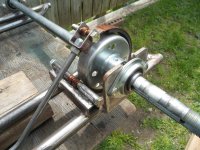I "squared" the spindles & also, the steering shaft so, I could do some measurements, to make up the tie rods
...it required (2) 11" pieces of 5/16 rod with ~1 1/2" of "fine" threads cut onto each end)
When installing the tie rods, I adjusted 'em "toed in" just a bit

Also, to help illustrate the Ackermann steering concept a bit more, I thought

maybe I can do some kind of a visual demo

So, I cut a paper plate in half (just 'cause it was round & paper)
...& drew lines on it @ 45*, 90* & 135* (Angle Gauge)
...& then, "aligned" it under the spindle & stapled it down
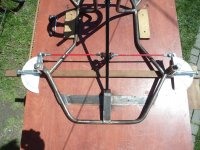
A closer view of the "Angle Gauge"
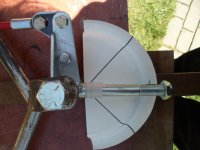
Next, I "traced" along both sides of the spindles @ ~90* & also, @ full turn, left & right (blue ink)
Here is the info, on the port (left) spindle:
....on a full left turn, it turns to ~3/8" above the 45* line
...& then, on a full right turn, it turns to ~7/8" below the 135* line
As can be seen, (on this port (left) spindle)
...when turning left, this "inside tire" turns at a sharper angle
...than, it does when turning right (when it would be the "outside tire")
So, this means that on a left turn, the left "inner" tire would "follow" a smaller circle, than the right "outer" tire
...& then on a right turn, the right "inner" tire would "follow" a smaller circle, than the left "outer" tire

Pic of Angle Guage (with "turn" info) on the port (left) spindle
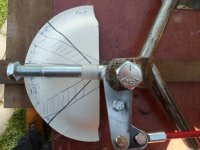




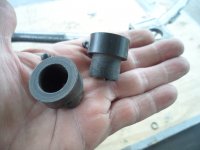
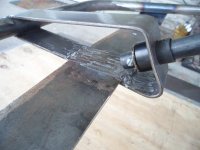
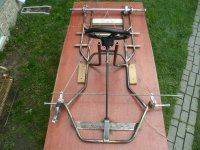
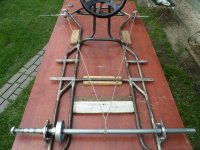
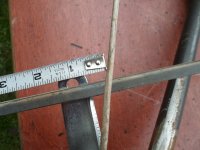
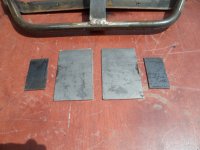
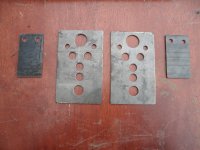
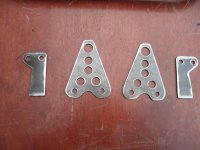
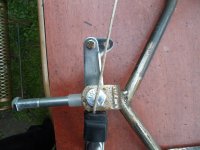
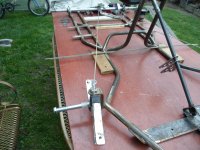
 maybe I can do some kind of a visual demo
maybe I can do some kind of a visual demo 


